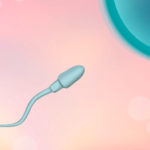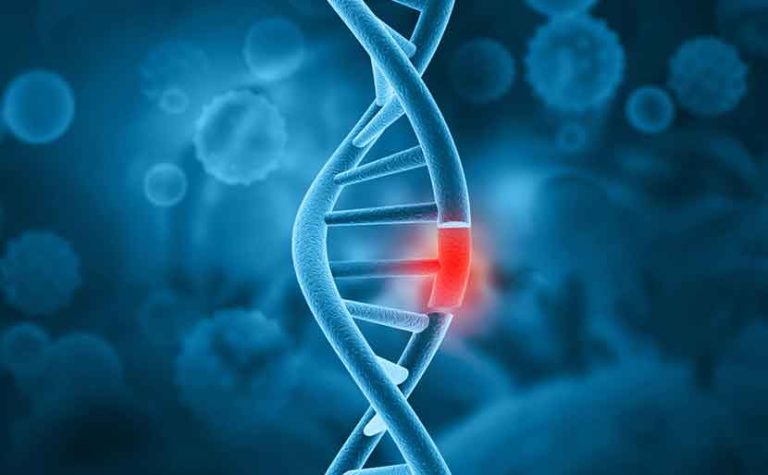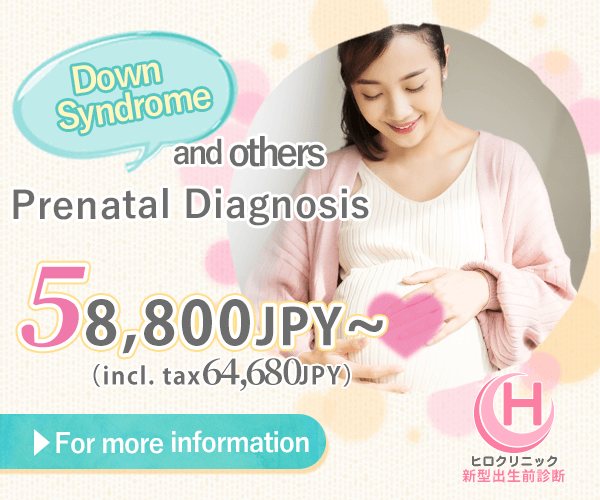12q24.31-q24.33. will automatically perform the following
Jaime Lin1,2, Gigliolle Romancini de Souza-Lin1,3, Fernanda Coan Antunes1,
Letícia Burato Wessler2, Emílio Luiz Streck2, Cinara Ludvig Gonçalves2
1Universidade do Sul de Santa Catarina, Tubarão, SC, Brazil.
2Universidade do Extremo Sul Catarinense, Criciúma, SC, Brazil.
3Hospital Nossa Senhora da Conceição, Tubarão, SC, Brazil.
DOI: 10.31744/einstein_journal/2020RC5335
Summary
Chromosomal abnormality is the cause of several birth defects worldwide, including Deletion of telomeres/subtelomeres some are related to the Anomalies involving telomeres on chromosome 12 is rare, and the 12q24.31 region is involved lack has rarely been reported in the literature, and to the best of our knowledge, the 12q24.31-q24.33 region lack is only four cases. We found a 12q24.31-q24.33 band interstitial with autism spectrum disorder lack we report a further case of a 2-year-old boy with generalized developmental delay associated with multiple congenital anomalies. The human genome CGH microarray 60K revealed 12q deletion syndrome the patient was diagnosed as a “patient with a history of disease”. In this study, we reviewed the most recent literature comparing our patient to previously reported cases. These detailed analyses are, 12q deletion genotype-phenotype correlations and may help to improve the diagnosis and prognosis of this deletion.
Keywords: chromosomal abnormality, Nervous system malformations, developmental disabilities, autism spectrum disorders, 12q24.31 deletion syndrome
Introduction.
Changes in gene abundance due to gains or deletions of large genomic regions are often genetic disorder It is a cause of often accompanied by phenotypes such as intellectual disability, autism spectrum disorder (ASD), intellectual(1)。
Autism spectrum disorders are a set of neurodevelopmental disorders (within the first three years of life) characterized by deficits in social behavior and nonverbal interactions, including It is widely considered to be not a single disorder, but rather a multifactorial disorder resulting, broadly speaking, from genetic and non-genetic risk factors and their interactions, although ASD is a very complex and heterogeneous disorder, highly hereditary disease be (formal, literary)(1)。
Among the techniques for detecting susceptibility genes for ASD, the comparative genomic hybridization (CGH) technique is widely used in ASD research and clinical practice to detect copy number variants (CNVs) in the genome. Copy number variants are an important source of genetic diversity and are responsible for disease susceptibility of several neurobehavioral phenotypes(2)。
Cause of some congenital malformations genetic abnormality. In the, Telomeric or subtelomeric deletions related to the following. Among them, Telomeric/subtelomeric deletion of chromosome 12q is rare, and only a few patients presenting with small stature have been reported so far. Telomeric/subtelomeric deletion of chromosome 12q is rare, and has been reported in the small band 12q24.31-q24.33 interstitial lack and only a few patients have presented without other karyotypic abnormalities. (3-6)We have found that the 12q24.31-q24.33 band of interstitial lack and reported a patient with a 12q24.31 region containing lack the latest literature will be reviewed and compared with previously reported cases, including several other cases of
Case Report
A 2-year-old boy underwent a pediatric neurological examination for generalized developmental delay related to multiple congenital anomalies.
The patient was born from the first pregnancy of a healthy blood relative (parents are first cousins). At the time of conception, the mother was 24 years old and the father was 36 years old. There was no history of miscarriage, no reported use of prescription or over-the-counter medications, and no exposure to teratogens during pregnancy.
The pregnancy was complicated by an enlarged ventricle on ultrasound at 5 months gestation. She was delivered by cesarean section at 7 months’ gestation due to premature labor. Birth weight was 1,720 g (<3 centile), height was 39 cm (<3 centile), and occipito-frontal circumference (OFC) was 31 cm (<3 centile).
The patient was hospitalized four times in early infancy (twice for pulmonary infections, once at 6 months for surgical removal of an extra toe on the left foot and an undescended testicle, and the last time at 8 months for ventriculoperitoneal shunt surgery for hydrocephalus).
Early general delay in developmental milestones was noted. He was cervically stable at 12 months of age and able to sit at 16 months.
At the present time of 24 months, the patient was stunted, weighing 10.6 kg (5th percentile), 78 cm (<5th percentile) tall, and had a 48 cm (50th percentile) occipitofrontal circumference. Physical characteristics were significant for a large anterior fontanel and slight coarsening of the facial appearance. The nose was short, with anteriorly inclined nostrils and a smooth midsection (Figure 1-A). Ears were normally situated and normal in size and shape. The palate was narrow with thick gums. The patient also presented with a fifth digit obliquity and polydactyly on the left foot (Figure 1-B, C).
Figure 1. multiple congenital anomalies.
(A) Slight coarsening of the face, anterior tilt of the nostrils, smooth midface.
Ears were normally fixed and normal in size and shape
(B) Oblique finger of the fifth finger of the hand
(C) Polydactyly of the left foot
The neurological evaluation was notable for self-aggressive behavior characterized by head collisions leading to severe self-injury. The patient presented with spastic hypertonia and active tendon reflexes and was unable to walk or talk independently.
MRI revealed supratentorial hydrocephalus, ballooning of the optic chiasmatic recess, thin corpus callosum, enlargement of the lateral and third ventricles, clear septal defect, and hypomyelination of the brain (Figure 2).
Figure 2. MRI T2-weighted sagittal image. The corpus callosum was thin.
MRI T2-weighted coronal section image.
(A) Water network with supra-tentorial hydrocephalus and ballooning of the optic chiasmatic depression (arrow).
(B) Axial image.
(C) dilated lateral and third ventricles, clear septal defect (arrow in C), and myelination of the brain
Human Genome CGH Microarray 60K (Agilent Technologies™) starting from the middle of 12q24.31 from genomic position (123.309.075bp) to the proximal end of q-arm (132.283.607bp), arr[NCBI36/Hg18]12q24 terminal loss the results revealed that the 31-q24.33(123.309.075-132.283.607)X1 by 12q deletion syndrome the diagnosis was made. The test was performed in 2011 by the Human Genome Research Center (Institute of Biological Sciences – University of São Paulo).
Known ASD-related hereditary disease numbers have increased with the use of array comparative genomic hybridization (aCGH). Such genetic diversity associated with similar autistic cognitive-behavioral phenotypes is known as “symptomatic autism” or “combined autism” (Hereditary Diseases/Hereditary Syndromes related autism), and this concept qualifies individuals with at least one morphological abnormality/deformity or severe intellectual disability. This is contrary to the concept of “non-syndromic autism” or
The term “simple”/”pure”/”idiopathic autism (isolated autism)” means that the person with moderate intellectual disability has normal cognitive functioning and no other associated signs or symptoms.(2)
Genetic testing of such symptomatic autism cases may lead to recognition of rare and/or underreported disorders. These chromosomal abnormality of which 12q24.31-q24.33 Deletion of telomeres/subtelomeres is rare, and the main clinical findings of previously reported cases are summarized in Table 1.
The authors’ patients include developmental delays, coarse facial features, growth failure, large anterior fontanel, delayed language development, and stridor, 12q deletion with some phenotypic findings consistent with those presented in other patients with Only one study showed that the parents were cousins, which was also observed in our patient’s history. These findings are, 12q deletion The detailed contribution to the expression of the genotype/phenotype correlations of the and comparisons with additional patients will continue to be added to this clinical description.
lack The region contains 52 annotated genes. Within these P2RX2 and ACADS, the developmental delays and behavioral and social problems presented by the authors’ patients should be noted.
Conclusion.
Detailed findings of rare syndromes are, 12q deletion contributes to the expression of genotype/phenotype correlations, and comparisons with additional patients would continue to add to this clinical description. Genetic investigation of symptomatic autism cases may lead to recognition of rare and/or unreported disorders.
The authors found that in patients with intellectual disabilities, dysmorphism, developmental delays, and multiple congenital anomalies chromosomal abnormality emphasizes the importance of genetic analysis for the study of
Consideration
Technological advances in epidemiology and molecular genetics have recently led to new findings in the field of the genetics of neuropsychiatric disorders. These new findings are also relevant to the field of autism genetics and are related to ASD hereditary disease Expanding current knowledge about(1)。
Author Information
Lin J: http://orcid.org/0000-0002-7433-6231
Susan Lynn GR:http://orcid.org/0000-0001-9930-7288
Antunes FC: http://orcid.org/0000-0001-5571-3321
Wesler LB:http://orcid.org/0000-0001-6700-0396
Streckel:http://orcid.org/0000-0002-2859-4678
Gon Alves CL:http://orcid.org/0000-0003-2468-8885
References
- Park HR, Lee JM, Moon HE, Lee DS, Kim BN, Kim J, et al. A short review of current understanding of autism spectrum disorders. Exp Neurobiol. 2016;25(1):1-13. review.
- Marshall CR, Noor A, Vincent JB, Lionel AC, Feuk L, Skaug J, et al. Chromosomal structural variation in autism spectrum disorders. Am J Hum Genet. 2008;82(2):477-88.
- Al-Zahrani J, Al-Dosari N, AbuDheim N, Alshidi TA, Colak D, Al-Habit O, et al. Deletion of chromosome 12q24.31-q24.33 causes multiple dysmorphic features and developmental delay: first mosaic patients and 12q24 An overview of phenotypes associated with qter deletions. Mol Cytogenet. 2011;4:9.
- Niyazov DM, Nawaz Z, Judge AN, Toriello HV, Martin CL, Adam MP. Genotype/phenotype correlation in two patients with a 12q subtelomere deletion. Am J Med Genet A. 2007;143A(22):2700-5.
- Plotner PL, Smith JL, Northrup H. Deletion 12q: a second patient with a 12q24.31q24.32 deletion. Am J Med Genet A. 2003;118A(4):350-2.
- Sathya P, Tomkins DJ, Freeman V, Paes B, Nowaczyk MJ. report of a patient with de novo deletion 12q:12q24.31q24.33 deletion. Am J Med Genet. 1999;84(2):116-9.
- Baple E, Palmer R, Hennekam RC. Microdeletion at 12q24.31 may resemble Wiedemann syndrome in neonates. Mohr Syndrome. 2010;1(1):42-5.
- Choury E, Choucair N, Abou Ghoch J, El Sabbagh S, Corbani S, Megarbane A. Report on a patient with a microdeletion at 12q24.31 inherited from an insulin-dependent diabetic father. Mol Syndrome. 2013;4(3):136-42.
- Qiao Y, Tyson C, Hrynchak M, Lopez-Rangel E, Hildebrand J, Martell S, et al. Clinical application of a 2.7M cytogenetic array for CNV detection in subjects with idiopathic autism and/or intellectual disability Clin Genet 2013; 83 (2):145-54.
- Palumbo O, Palumbo P, Delvecchio M, Palladino T, Stallone R, Crisetti M, et al. 12q24.31 refinement: report of a girl with intellectual disability, stereotypy, seizures and facial dysmorphism. Am J Med Genet A. 2015; 167A(2):438-44. review.
Table 1. clinical summary of cytogenetic abnormalities associated with 12q telomere deletion
Table 1 Example of reported deletion involving 2p16p21 region
| Genetic Description | Reference | Phenotype |
|---|---|---|
| 46, XY, del (12) (q 24.31-q24.33), mosaic | Al-Zahrani et al.(3) | 8 years old, severe growth retardation with very low IGF-1 levels, developmental delay, facial morphology abnormalities, low set ears, cryptorchidism with short penis, elbow deformity |
| 46, XY, 12q subelomeric deletion; 1. | Niyazov et al. | 8 years old, delayed language development, food seeking behavior, attention deficit hyperactivity disorder, high pain threshold, no facial morphology abnormalities, additional anterior second hairline, brachycephaly. Strabismus and obesity |
| 46, XY, 12q subelomeric deletion; 4.5Mb; 22 gene | 12 yrs old, left stop, renal anomalies (polycystic left kidney, ectopic right kidney). Epidermal groove, small ears, delayed knots, moderate ID, food-seeking and self-injurious behavior | |
| 46, XY, del (12) (q24.31q24.32) | Plotner et al. | 9 months old, tracheomalacia, indistinct genitalia, Dandy-Walker syndrome, coarse face, large anterior fontanelle, short palate droop. Ptosis of left eye, thick gums, large tongue, mild generalized hypotonia, bifid scrotum, bilateral palpable testes, small penis, long fingers and patulous fingertips Developmental delay (at 9 months, unable to sit unsupported, crawl, babble or coo). |
| 46, XY, del (12) (q24.31q24.33) | Sathya et al. | 12 months of age, developmentally delayed (developmental level 10-12 months at 20 months of age), no genital abnormalities. Genital abnormalities, microcephaly, large pubic fat pad, sacral pits, tapered fingers, duodenum, flat footed flat feet, cardiac abnormalities (pericardial VSD, mild tricuspid regurgitation, secundum ASD. mild biventricular and left atrial dilation, mild tricuspid regurgitation), facial morphology including large bulbous nose, smooth filiform Abnormal facial morphology (large bulbous nose, smooth glabella, etc.). Abnormal facial morphology (large bulbous nose, smooth glottis, large ears). |
| 46, XX, del (12) (q24.31) | Baple et al. (7) | 13 years old, malocclusion, overgrowth, hyperinsulinemia, developmental delay (walking at 1.5 years, able to use several words at 2 years), significant anxiety, autism spectrum disorder, moderate to severe intellectual disability, cleft palate, wide nasal floor, bulging cheeks, highly arched palate. Large limbs, mildly tapered fingers, short toes, left fourth finger buried proximally, shortened fourth metacarpal. |
| 46, XX, del (12) (q24.31) | Chouery et al. (8) | 2 years old, overall developmental delay (at 1.5 years, unable to sit without support, no crawling or babbling, lack of social interaction skills, rarely smiles in response, takes a few steps with support), infantile spasms, hypotonia, microcephaly, flat face, bulging cheeks, giant tongue, highly arched palate, retropulsion, narrow ear holes, cafe au lait spots, low irregular pulse |
| 46, XX, del (12) (q24.31) | Qiao et al. (9) | 8 yrs old, monogenic ASD, global developmental delay, moderate ID, upturned cleft palate. Slurred speech, small, low, retroflexed ears, high nasal root, thick nasal root with a square tip. Prominent anterior teeth and narrow palate, very tapered fingers and prominent finger pads. The nails are hypoplastic in both hips, with mottled eczema and thick ichthyosiform skin, diagnosed as follows: T-cell cutaneous lymphoma (hyperpigmentation in the lumbar region). |
| 46, XX, del (12) (q24.31) | Palumbo et al.(10) | 12 yrs old, unidentified, seizures, stereotypy, lip deficiency, cheek fullness, persistent foramen ovale patency. She had hypoglycemic episodes, spastic quadriplegia since a few months of age, generalized delay (started walking at 2.5 years, speaking at 4 years), hypoplastic nail bones with proximal implantation of the fourth metacarpal. Facial morphological abnormalities were characterized by a long oval face with a downward displaced cleft palate, a wide nasal base, and a high nose. The nasal root was high, the palate was high, the teeth were dense, and the vermilion color of the lower lip was perfect and autosomal. The ears are large and narrow with thick helixes. Magnetic resonance imaging of the brain shows dysplastic ventricles. |
| 46, XY, del (12) (q24.31-q24.33) 9Mb | Current Patients | At 12 years of age, developmentally retarded, unable to walk or talk independently, poor growth, large anterior foreface Large anterior fontanelle, coarse face, short nose, recurved nostrils, smooth tongue. Narrow palate and thick gums, oblique fifth finger on left hand, self-aggressive behavior, active spasmodic tendon reflexes. |
IGF-1: insulin-like growth factor-I; ID: intellectual disability; VSD: ventricular septal defect; ASD: atrial septal defect.
How to cite this article.
Lin J, Souza-Lin GR, Antunes FC, Wessler LB,
Streck EL, Gonçalves CL. Autism-related
With deletion of 12q (12q24.31-q24.33): further
Report of a very rare disease Inst.
(Sao Paulo) 2020;18:eRC5335. http://dx.doi.org/
10.31744/einstein_journal/2020RC5335
Author in Charge:.
Fernanda Cohn Antunes.
School of Medicine and Biology
University Social Sciences
Santa Catarina Sul
Avenida Pedro Zaperini, 1,798 centro
Zip Code: 88701-480 – Tubaro, SC, Brazil
Phone: (55 48) 99906-9929
Email: fernandacoan@hotmail.com
Receipt Date
August 18, 2019
Accepted: (in Japanese only)
November 29, 2009
Copyright 2020
This content is licensed.
Under Creative Commons
Attribute 4.0 International License





















